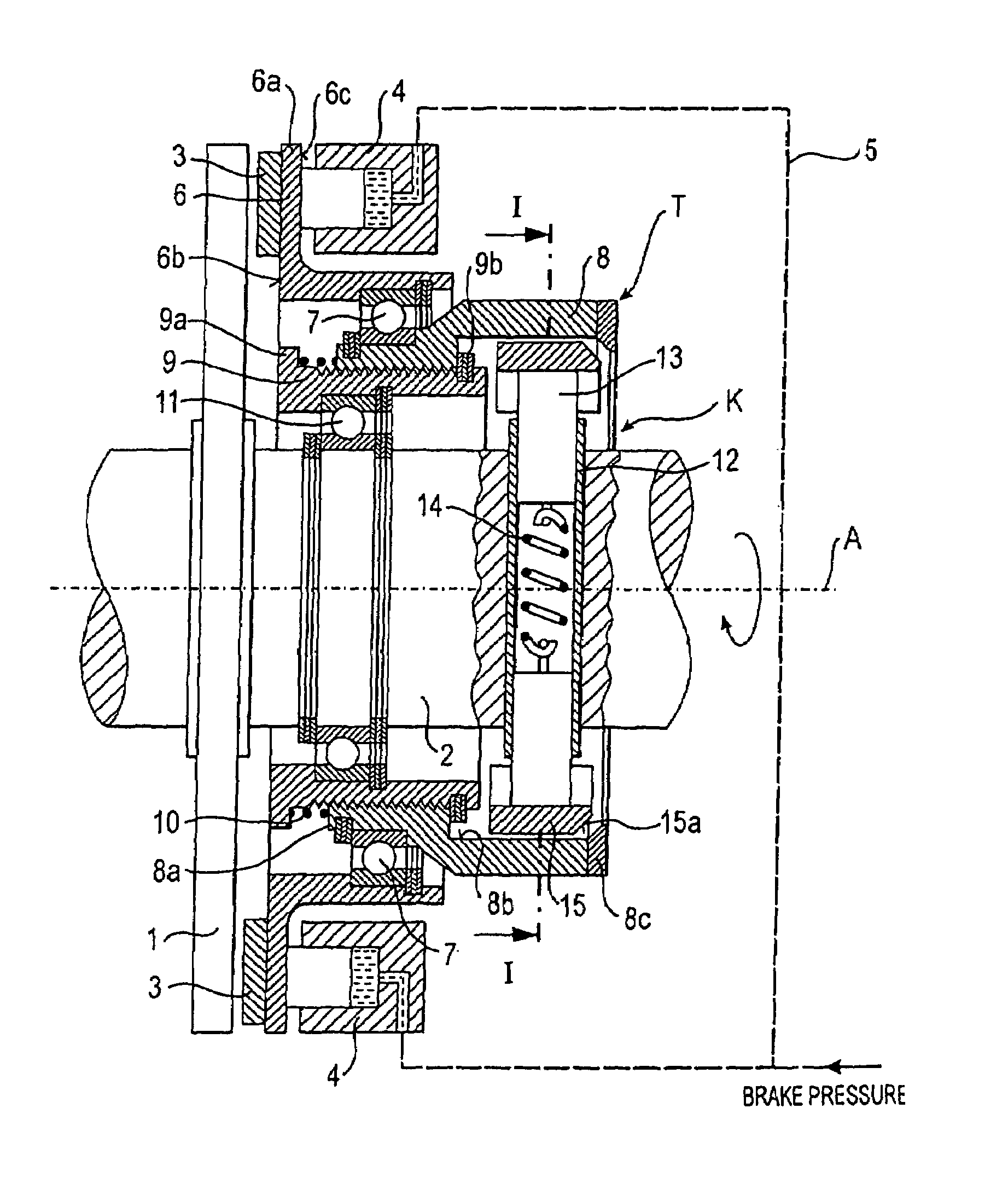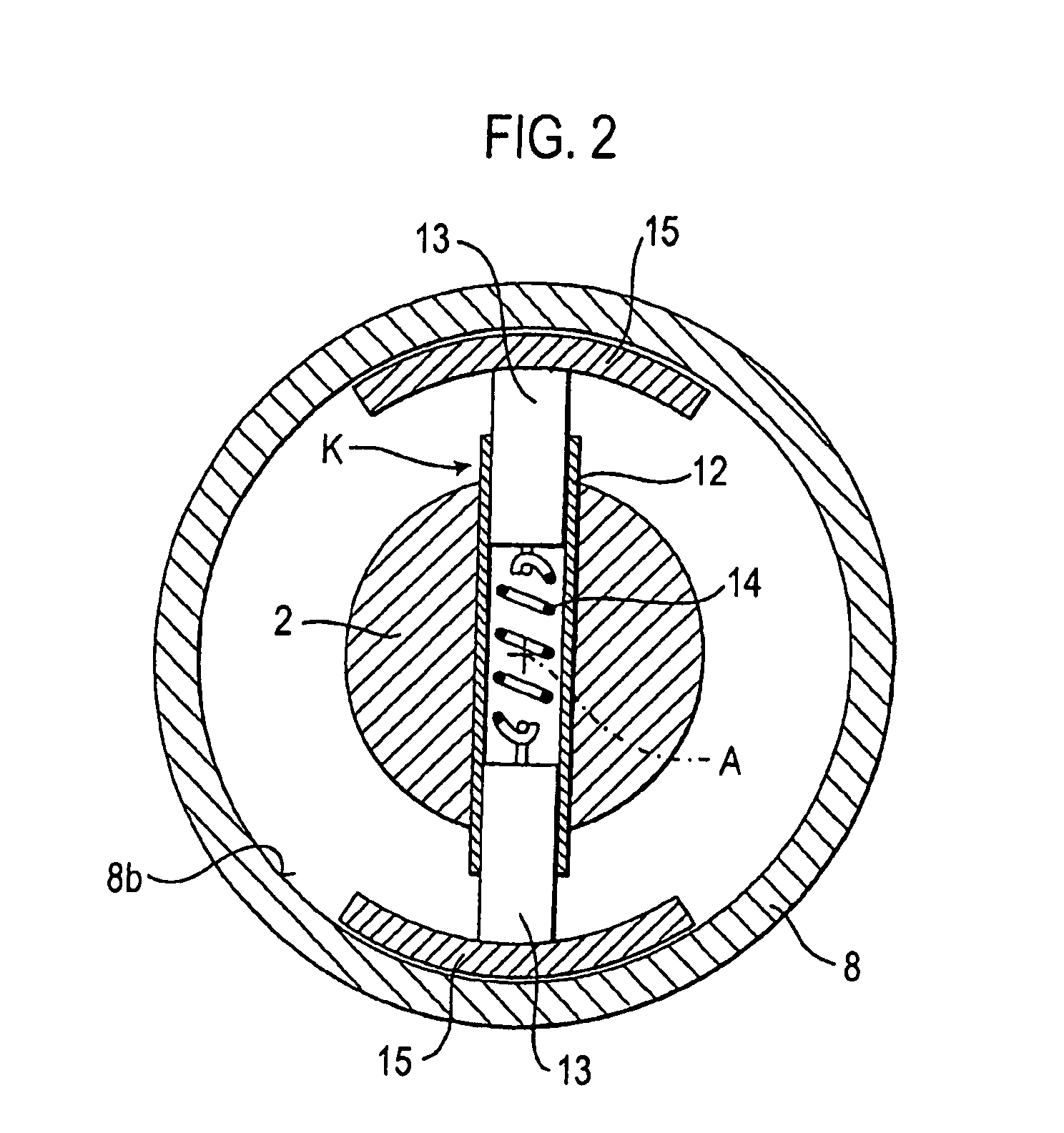Rotor brake as well as rotor and rotary-wing aircraft with such a rotor brake
a technology of rotor brake and rotor rotor, which is applied in the direction of mechanical equipment, machines/engines, transportation and packaging, etc., can solve the problems of strong brakes, only relatively slow reduction, and substantial weight of rotor brakes
- Summary
- Abstract
- Description
- Claims
- Application Information
AI Technical Summary
Benefits of technology
Problems solved by technology
Method used
Image
Examples
Embodiment Construction
[0019]FIG. 1 schematically shows a longitudinal section through a rotor brake according to the present invention associated with a rotor. In this example, this rotor is a tail rotor of a helicopter that is driven by a tail rotor shaft 2, referred to below for short as the rotor shaft 2. The rotor brake comprises a braking force absorption element in the form of a brake disk 1 that is non-rotatably and axially immovably connected to the rotor shaft 2. However, the brake disk 1 could fundamentally also be attached axially floatingly to the rotor shaft 2. The brake disk 1 extends essentially radially around the rotor shaft 2.
[0020]Moreover, the rotor brake is fitted with several hydraulic brake actuators 4 that are each arranged in a stationary manner, that is to say, for instance, secured to a structural component of a gear housing (not shown), and that serve to actuate a braking force transmission element 3 (here: a brake lining 3). For the sake of simplicity, reference will be made ...
PUM
 Login to View More
Login to View More Abstract
Description
Claims
Application Information
 Login to View More
Login to View More - R&D
- Intellectual Property
- Life Sciences
- Materials
- Tech Scout
- Unparalleled Data Quality
- Higher Quality Content
- 60% Fewer Hallucinations
Browse by: Latest US Patents, China's latest patents, Technical Efficacy Thesaurus, Application Domain, Technology Topic, Popular Technical Reports.
© 2025 PatSnap. All rights reserved.Legal|Privacy policy|Modern Slavery Act Transparency Statement|Sitemap|About US| Contact US: help@patsnap.com



